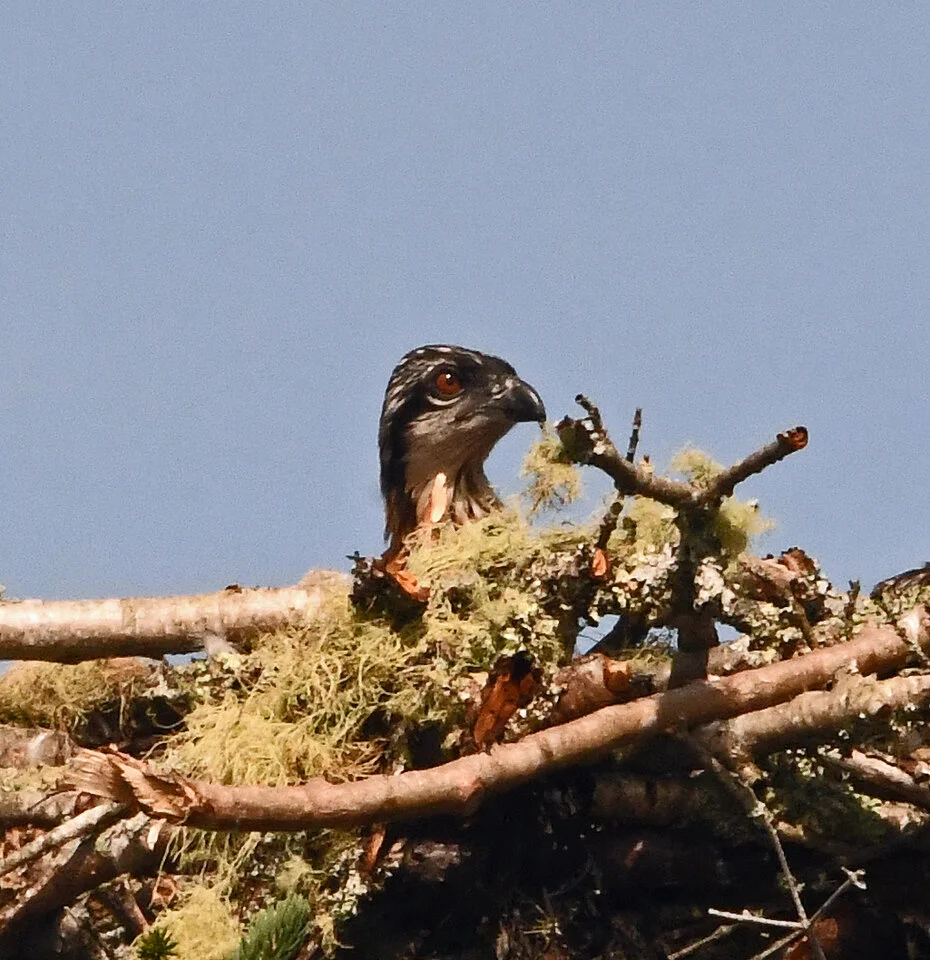Here you see Harriet feeding a chick on Monday, July 5. – a very delicate process involving two sharp, hooked beaks.
Ozzie and Harriet remain in good health, but I’ve seen only that one chick recently. You’ll remember that we’ve seen three originally. There could be a benign reason for seeing only one now. The nest is deep and the dominant (first born) chick may be commanding the high ground to be fed first, while the other chicks huddle below where I can’t see them from my great distance. Harriet has been making moves that could be interpreted as feeding other, hidden chicks.
Of course, we need to remind ourselves that nests of big raptors will never pass an Occupational Safety and Health Agency inspection. Chicks fall out, try to fly too early, and get attacked by their more dominant siblings, not to mention being stomped accidently by incoming parents with talons.
The tyke that I saw Monday seemed healthy, inquisitively staring at the world with his red eyes that will turn to gold when it matures (sex assumed):
He is growing dark primary feathers and still has a lot of down on its wings:
Ospreys usually have few problems with predators; they are extraordinarily protective and will viciously attack intruders. However, sometimes a raccoon will get to the eggs or a rogue osprey, bald eagle, or great horned owl may get a chick by slipping under the radar while the female takes a short break from the nest. Here’s Harriet returning to the nest from a short pond-water-sipping break last week on a foggy day:
(Brooklin, Maine)



